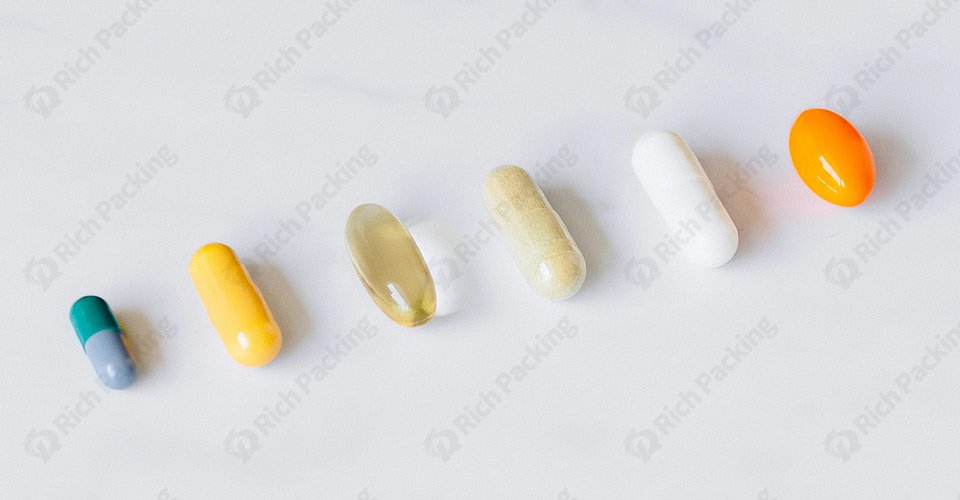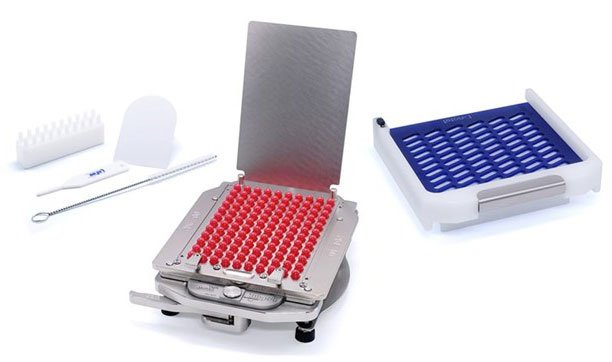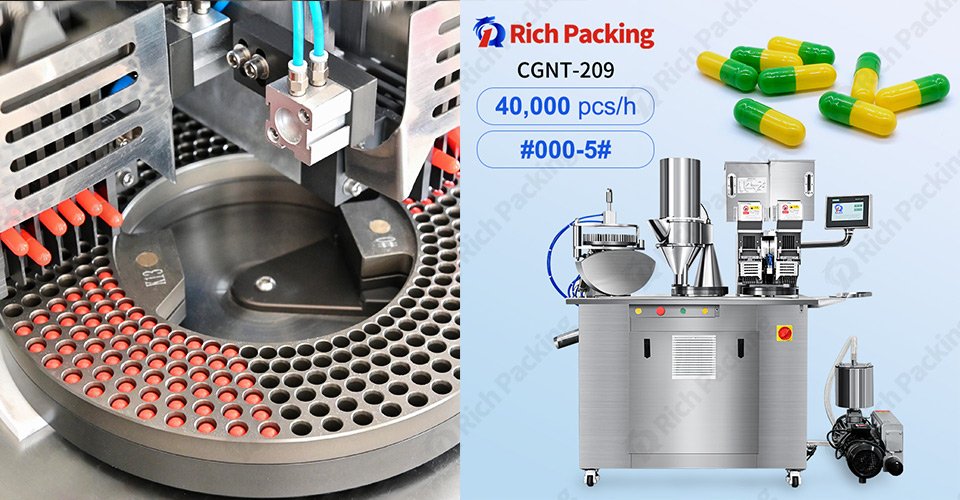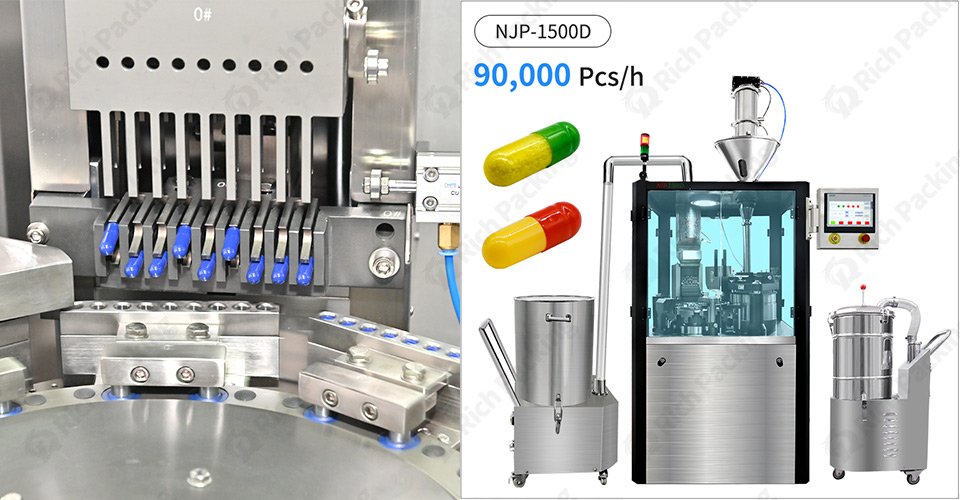Categories
New Blog
Tags
In the pharmaceutical industry, choosing the right capsule filling method is crucial. It not only affects the production efficiency, but also directly relates to the product quality and patient's medication experience. Different capsule filling methods have their own characteristics and application scenarios. Through in-depth understanding of these methods and their specific steps, you can choose the most appropriate solution for production.

Common capsule filling methods and detailed steps
Manual capsule filling is a traditional method suitable for small batch production, usually used in the research and development or pilot production stage. It has a low dependence on equipment, but its efficiency is more limited. The following are the detailed steps for manual capsule filling:
Detailed Steps:
- Preparing the capsule: the empty hard gelatin capsule is divided into two parts: the upper cap and the lower shell.
- Loading the filler: Prepare the powdered or granular material and load the filler into the lower shell of the capsule using a measuring device or a small spoon. Ensure that the material is evenly distributed and gently compacted during each loading.
- Combine Capsules: When the lower shell of the capsule is full, align the top cap and manually combine the top cap with the lower shell.
- QUALITY CONSULTATION: Check the appearance of the capsule to see if it is intact and make sure the capsule is sealed tightly.
Advantages and disadvantages:
- Advantages: low cost, suitable for small batch production, high flexibility.
- Disadvantages: low production efficiency, the consistency of filling depends on operator's experience, easy to produce errors.

2. Semi-Automatic Capsule Filling Machine
Semi-automatic filling machine combines the advantages of manual and automatic, which can improve the production efficiency while maintaining a certain degree of flexibility. It is suitable for small and medium scale production.
Detailed steps:
- Load capsule: Empty capsule will be poured into the capsule supply system of the machine, the system will automatically separate the capsule upper cover from the lower shell and position it in the filling area of the machine.
- Placement of the filler: the powder or granules are loaded into the machine's hopper. The machine evenly fills the lower shell of the capsule by vibration or compaction.
- Merge capsule: When the filling material is ready, the machine automatically merges the upper cap with the lower shell to form a complete capsule.
- Discharge the finished product: the finished capsule is automatically discharged through the discharge port, ready for the next process (e.g. quality control or packaging).
Advantages and disadvantages:
- Advantages: higher productivity than manual, suitable for medium batch production, higher filling accuracy.
- Disadvantages: Higher equipment cost, operators need to have certain skills.

Fully automatic capsule filling machine is suitable for large-scale production, can realize fully automatic operation, from capsule separation, filling to consolidation of capsules, almost no need for manual intervention, production efficiency is very high.
Detailed steps:
- Capsule Separation: Load a large number of empty capsules into the capsule feeding device of the machine. The machine automatically separates the capsules into upper and lower shells and places them precisely in the filling tray.
- Material Filling: The machine uniformly fills the lower shell of each capsule with powder or granules by means of a dosing device. This process is accomplished by a robotic arm or other automated equipment.
- Capsule Merging: After filling, the machine aligns and merges the upper cap with the lower shell to completely close the capsule.
- Finished Product Output: The merged capsules are automatically output through the discharge port and sent to a subsequent process or packaging line.
- Cleaning and Maintenance: The machine needs to be cleaned automatically or manually after production to ensure hygiene standards.
Advantages and disadvantages:
- Advantages: very high production efficiency, suitable for mass production, operation automation, high filling precision, reducing human error.
- Disadvantages: expensive initial investment in equipment, maintenance and operation require specialized technicians.

Soft capsule filling is used to fill liquid or semi-solid content, commonly used in vitamins, fish oil and other nutraceuticals production. Soft capsule filling process is relatively complex, usually using specialized soft capsule filling equipment.
Detailed steps:
- Capsule Forming: The capsule shell of the softgel capsule is formed in the machine by gelatin solution through the mold.
- Filling of contents: The molded softgel shell is immediately filled with liquid or semi-solid contents inside the machine.
- Sealing and Molding: After filling the contents, the machine will quickly seal the capsule and shape it by cooling or heating to ensure the integrity and stability of the capsule.
- Discharge of finished product: The finished softgel capsule will be automatically discharged and prepared for subsequent processes such as drying and quality control.
Advantages and disadvantages:
- Advantages: suitable for liquid or semi-solid filling, tight sealing of finished capsules, high stability of contents.
- Disadvantages: high cost of equipment, complex production process, suitable for mass production.
Selection of suitable capsule filling method requires comprehensive consideration of a number of factors:
- Production scale: large-scale production is recommended to use fully automatic filling equipment, while small batch production can choose manual or semi-automatic filling machine.
- Cost factors: manual filling cost is the lowest, but low efficiency; automatic equipment, although the initial investment is large, but suitable for long-term mass production, reduce labor costs.
- Filler characteristics: different types of materials (such as powder, granules, liquids) on the filling process requirements are different, the need to choose the appropriate equipment and methods.
Regardless of which filling method is chosen, ensuring the quality of the capsule is always the first priority. The following are common quality control steps:
- Weight control: Ensure that the filler weight of each capsule is consistent to avoid inaccurate dosage.
- Sealing test: Ensure that the capsule's upper lid and lower shell are well sealed to prevent leakage of the contents.
- Appearance check: Ensure that the surface of the capsule is smooth and free from breakage or defects.
Understanding the advantages and disadvantages of various capsule filling methods and their detailed steps will help you choose the most appropriate solution for your specific production needs. Whether it's manual filling, small-scale production, or fully automated large-scale production, finding the right capsule filling method for you can greatly improve productivity and product quality to stand out in a competitive market.